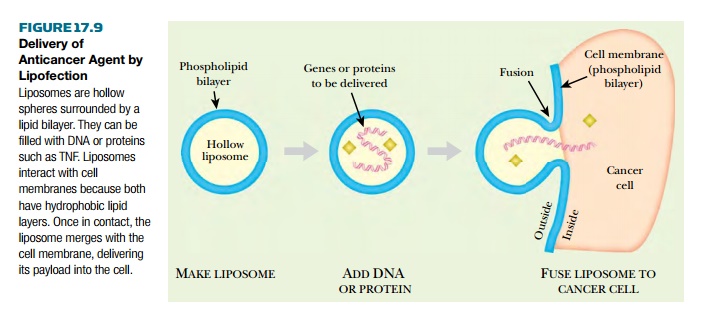Chapter: Biotechnology Applying the Genetic Revolution: Gene Therapy
Liposomes and Lipofection in Gene Therapy
LIPOSOMES
AND LIPOFECTION IN GENE THERAPY
About 10% of gene therapy
trials have used liposomes. These
are hollow microscopic spheres of phospholipid, and can be filled with DNA or
other molecules during assembly. The liposomes will merge with the membranes
surrounding most animal cells and the contents of the liposome end up inside
the cell (Fig. 17.9), a process known as lipofection.
Although lipofection works reasonably well, it is rather nonspecific, because
liposomes tend to merge with the membranes of any cell.

A formidable problem during
anticancer gene therapy is how to get foreign DNA specifically into cancer
cells (see later discussion). Lipofection is a promising approach because
“armed” liposomes can be injected directly into tumor tissue. In fact,
liposomes are probably of more use in delivering proteins than DNA, something not
feasible when using viruses as genetic engineering vectors. For example, toxic
proteins such as tumor necrosis factor
(TNF) can be packaged inside liposomes and injected into tumor tissue. The
liposomes merge with the cancer cell membranes, and the lethal proteins are
then released inside the cancer cells.
Related Topics